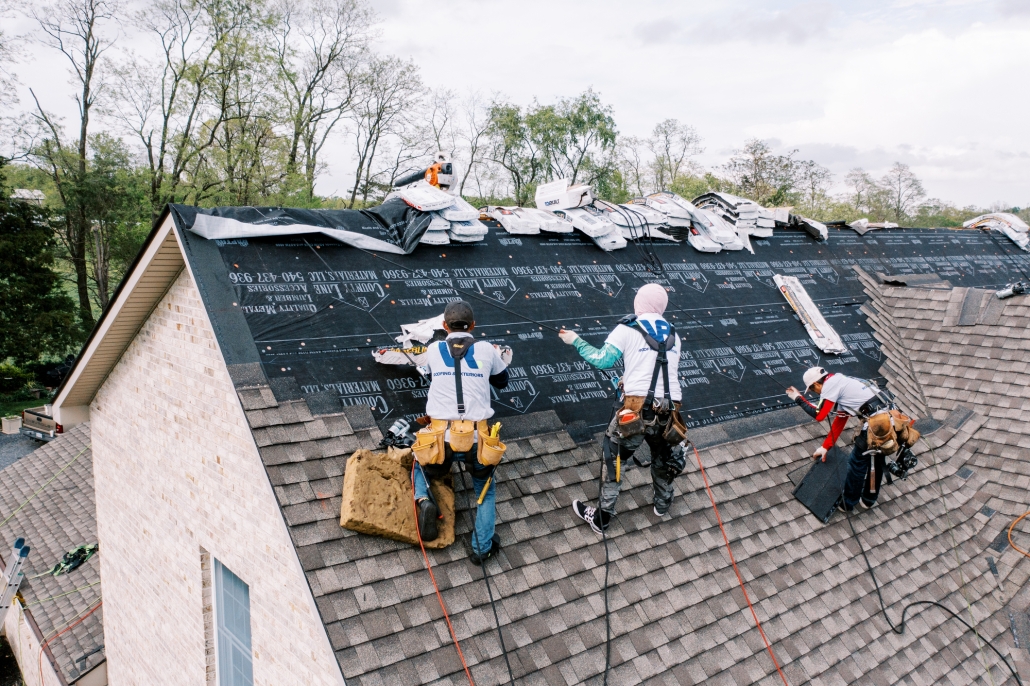A Comprehensive Consider Roofing Companies Gainesville Homeowners Recommend
A Comprehensive Consider Roofing Companies Gainesville Homeowners Recommend
Blog Article
Ideal Practices for Ensuring Proper Roof Covering Ventilation
A well balanced consumption and exhaust vent ratio, generally 1:300, plays a critical function, with consumption vents preferably positioned at the reduced side of the roof for amazing air entry and exhaust vents at the height for cozy air exit. Maintaining insulation away from vents is critical to prevent airflow constraint.
Understand Ventilation Essentials
Correctly understanding air flow fundamentals is essential for making sure the durability and performance of roof. Efficient air flow alleviates moisture build-up and temperature extremes in the attic, both of which can bring about considerable architectural damage over time. A well-ventilated roof assists in avoiding common concerns such as mold and mildew growth, timber rot, and ice dams, which can compromise the stability of the roof materials and the underlying frameworks.
The key goal of air flow is to facilitate the movement of air, permitting for a constant exchange in between the indoor and exterior atmospheres. This balance is accomplished via a combination of consumption and exhaust vents that collaborate to keep ideal airflow. Intake vents, typically located along the soffits or eaves, permit fresh air to get in the attic space, while exhaust vents, usually located at or near the roofing ridge, enable hot, damp air to run away.
Trick elements influencing the effectiveness of roof air flow consist of appropriate placement, adequate sizing, and ensuring that both consumption and exhaust vents are unhampered. Routine evaluation and maintenance are important to determine potential clogs, damages, or ineffectiveness in the ventilation system, thereby securing the roof covering's performance and longevity.
Kinds Of Roofing System Vents
Roof covering vents play an essential duty in preserving reliable attic room air flow and, by extension, the overall wellness of the roof system. Various kinds of roofing vents are readily available, each with special benefits customized to certain roof covering requirements.

Soffit vents are set up under the eaves and operate in tandem with roofing system vents to guarantee a balanced consumption and exhaust system. By allowing cooler air to enter from below, soffit vents facilitate the expulsion of warm air through top vents. Gable vents, situated on the outside wall surfaces of the attic room, deal an additional reliable solution, particularly in homes with gable roofing systems.
Assess Your Present Ventilation

Following, think about the age and problem of your roof covering materials and air flow elements. Older systems may not abide by present building ordinance or might have degraded gradually, reducing their performance. Conduct a comprehensive assessment to recognize any kind of indications of wear and tear, such as rust, damage, or gaps that can jeopardize the system's efficiency.
Additionally, measure the attic temperature and moisture degrees. High temperature click site levels and moisture can show insufficient air flow.
Installation Best Practices
Effective installation of roofing air flow systems is critical for making certain ideal performance and longevity. Proper installment begins with comprehending the specific air flow requirements of the building and the roofing system it covers. This includes calculating the right ratio of intake to tire vents, generally adhering to the 1:300 policy, which states one square foot of ventilation for each 300 square feet of attic floor space.

The placement of vents is just as critical. Intake vents need to be installed at the roof covering's Going Here reduced side, frequently in the soffits, to permit cool air to go into. Exhaust vents, on the various other hand, must be installed near or at the roofing system's peak to assist in the leave of warm, damp air. This develops a natural airflow that aids maintain temperature and moisture balance within the attic room.
Seal all vent connections diligently to avoid air leaks and possible water seepage. Usage high-grade products and adhere to manufacturer guidelines to guarantee resilience and efficiency. In addition, incorporating ridge vents with baffles can dramatically improve air movement effectiveness by preventing wind-driven rainfall and snow from entering the attic.
Inevitably, accurate installment of roofing ventilation systems reduces potential problems such as mold development, ice dams, and structural damage, making sure the roofing system's stability and the building's general wellness.
Normal Upkeep Tips
Consistency in maintenance techniques is essential to making certain the long-term performance of roofing air flow systems. Normal assessments are vital, ideally done biannually-- in the spring and fall. Throughout these examinations, make certain that vents are cost-free of particles, nests, and other blockages that can impede air flow. Examine for any type of indications of wetness accumulation or mold visit our website and mildew, as these can suggest inappropriate air flow or leaks (roofing companies in gainesville florida).
Cleaning up the vents is an additional important task. Make use of a soft brush or a vacuum cleaner to get rid of dirt and particles from intake and exhaust vents. Be careful not to damage the vent displays or louvers throughout the procedure. Additionally, check the attic room room for any signs of water damage, which could endanger the integrity of the roof system.
Correct insulation is just as vital. Ensure that attic insulation does not obstruct the vents, as this can badly limit air movement. If any type of insulation has changed or worked out, reposition or change it to keep an efficient barrier.
Lastly, replace any type of damaged or missing parts immediately. Broken vents, fractured roof shingles, or scrubby blinking can all add to poor air flow and should be attended to without hold-up. Normal maintenance ensures that the roofing ventilation system functions efficiently, therefore prolonging the life expectancy of the roof covering itself.
Conclusion
Ensuring proper roofing ventilation is extremely important for keeping the efficiency and longevity of a roof system. Adherence to the 1:300 consumption and exhaust air vent proportion, paired with the tactical placement of vents, is vital.
A well balanced consumption and exhaust vent proportion, frequently 1:300, plays a crucial duty, with consumption vents ideally put at the lower side of the roof covering for awesome air entrance and exhaust vents at the top for warm air exit. Intake vents, typically located along the eaves or soffits, enable fresh air to go into the attic room room, while exhaust vents, commonly positioned at or near the roofing ridge, allow warm, moist air to leave.
Soffit vents are mounted under the eaves and work in tandem with roofing system vents to make sure a well balanced intake and exhaust system. By enabling cooler air to enter from below, soffit vents assist in the expulsion of hot air via upper vents. Adherence to the 1:300 intake and exhaust vent ratio, coupled with the calculated placement of vents, is crucial.
Report this page